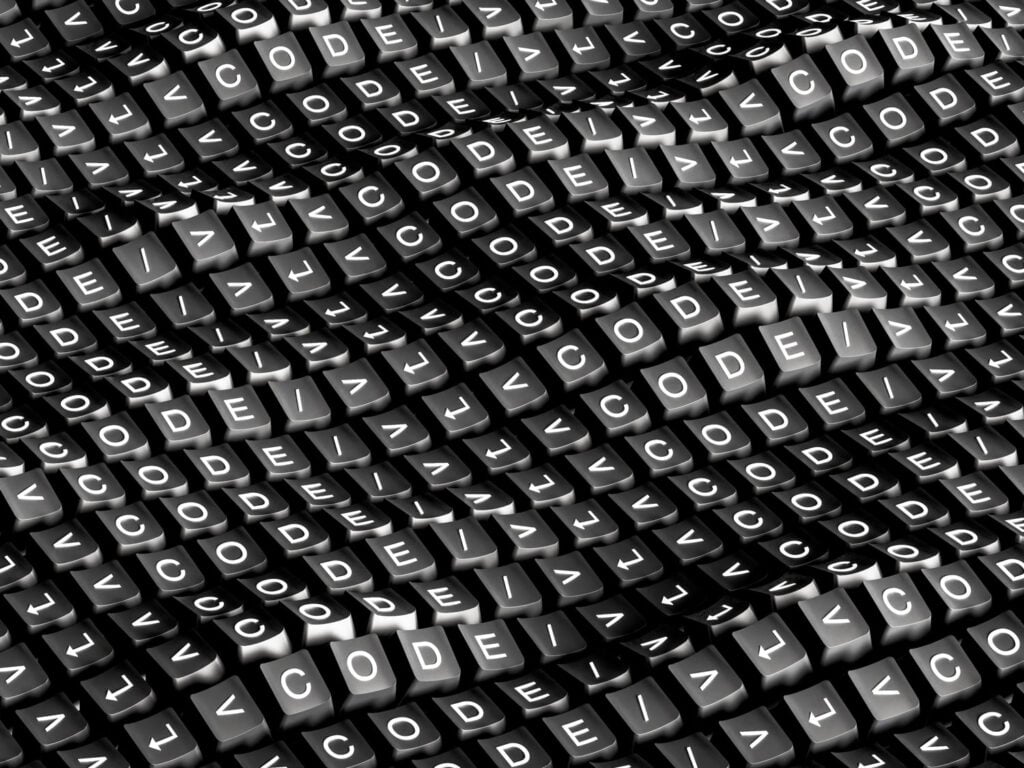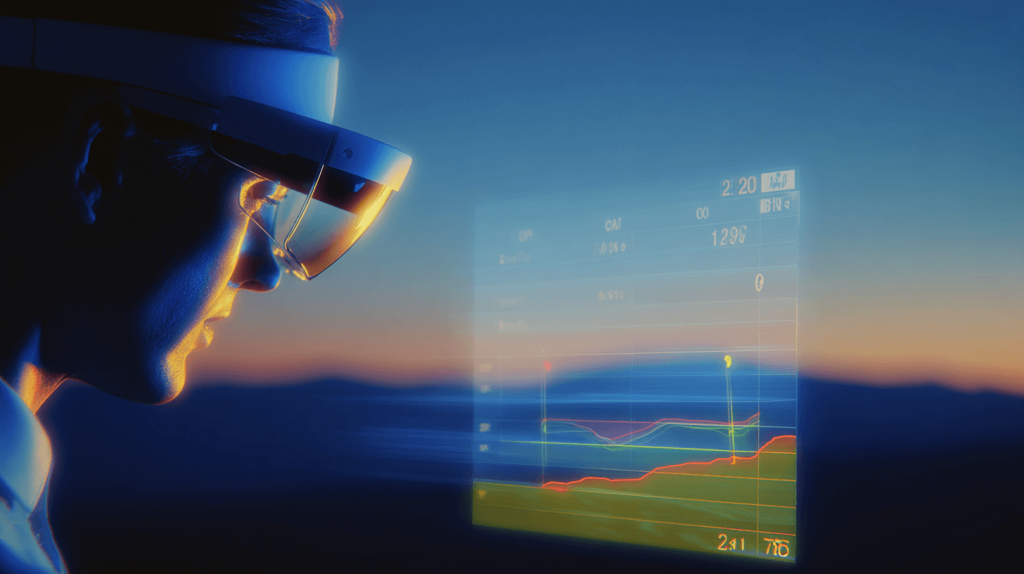Can you patent code? It’s a common question for software developers who want to protect their work and competitive edge.
In today’s competitive software industry, securing your code against imitation is crucial. While you can’t patent the code itself, you can patent the systems and methods your software uses.
This article will explain which parts of software are eligible for patenting, the criteria you need to meet, and how to go about filing a patent to protect your software effectively. Here’s a quick overview:
- Eligibility Criteria for Patenting Software:
- Understand the requirements your software invention must meet to be considered patentable, including novelty, non-obviousness, and utility.
- Patent Application Process:
- Learn the steps involved in filing a patent, from preparing a comprehensive technical description to drafting precise patent claims.
- Copyright vs.Patents for Software Code:
- Discover the differences between copyright and patent protection, and how they can be used together for comprehensive intellectual property protection.
- Role of Patent Attorneys:
- Explore the benefits of hiring a skilled patent attorney to navigate the complexities of software patent applications.
- Costs and Benefits of Software Patents:
- Analyze the financial implications of obtaining a software patent and the potential advantages it can offer in terms of market position and investor confidence.
- Alternatives to Patenting Software:
- Consider other strategies like trade secrets and licensing agreements for protecting your software innovations.
By understanding these key points, you can ensure your software invention receives the legal safeguards it deserves, thereby enhancing its value and securing your technological innovations.
Understanding the distinction between patenting the underlying systems versus the actual lines of code is vital for software developers seeking comprehensive intellectual property protection. By navigating the complex landscape of patent applications, you can ensure your software invention receives the legal safeguards it deserves, thereby enhancing its value and securing your technological innovations.
What is a Software Patent?
A software patent is a type of intellectual property protection specifically designed to safeguard computer software, including mobile apps, computer programs, and other software-related inventions. Unlike copyrights, which protect the literal code, software patents cover the underlying systems, methods, and processes that the software employs. This means that a software patent can prevent others from making, using, selling, or importing the patented software without permission.
To qualify for a software patent, the invention must meet the same criteria as any other patent: it must be new, useful, and non-obvious. This means the software must introduce a novel solution to a problem, provide a practical application, and not be an obvious improvement over existing technologies. By securing a software patent, developers and inventors can protect their innovative solutions and maintain a competitive edge in the market.
Can You Patent Code?
When it comes to protecting software, a common question is whether you can patent code. The short answer is no, you can’t patent the code itself. However, you can patent the systems and methods that the code uses.
Software patents are important because they protect your unique features and prevent others from copying your innovations. Once you have a patent, you get exclusive rights over your software invention for up to 20 years after the patent office approves it. This protection helps keep your competitive edge in a tough market.
The United States Patent and Trademark Office (USPTO) plays a crucial role in granting software patents. They determine the patentability of software by outlining specific criteria that must be met for approval.
Getting a software patent can be challenging due to the collaborative nature of software development and the strict standards set by patent offices worldwide. To navigate these complexities, it’s often helpful to work with experienced attorneys who specialize in software patents. They can help ensure your invention gets the protection it needs throughout its lifecycle.
Copyright vs. Patents for Software Code
Copyright and patent protections are crucial yet distinct methods of intellectual property protection within the realm of software development. While copyright law safeguards the exclusive source code and object code, ensuring others cannot simply clone it, this form of legal protection doesn’t block individuals from creating new code that delivers equivalent functionality.
However, a significant pitfall of relying solely on copyright is that it only protects the literal expression of the code, not the underlying ideas or functionalities. This means competitors can develop different code that achieves the same results without infringing on copyright, potentially leading to lost market share and diminished competitive advantage.
Conversely, patents secure the fundamental mechanisms and methodologies associated with software. They grant a wider scope of intellectual property protection by preventing competitors from duplicating distinctive features your software offers through alternate coding strategies. However, obtaining a patent is a complex and costly process. It requires a detailed description of the invention and a demonstration of its novelty, non-obviousness, and utility, which can be challenging to articulate for software-related inventions.
The combination of copyright for specific codes alongside patents for operational processes yields a thorough shield for the intellectual endeavors of software developers. Nevertheless, navigating patent law can be daunting, with potential pitfalls including the risk of rejection due to claims being too broad or too abstract. Additionally, patent litigation can be expensive and time-consuming, posing a risk to smaller companies with limited resources.
The common misconception is that copyrights provide a single defense to software. Both forms—copyrights and patents—are capable not only of coexisting, but jointly offer formidable legal security. This duo fortifies against violations concerning original aspects embedded in your programming achievements, though understanding the limitations and challenges of each is essential for effective intellectual property protection.
Patent Eligibility Criteria for Software
To be eligible for patent protection, software must fulfill certain requirements, similar to other computer related inventions. It should be a non-obvious and useful innovation. It is essential that the invention presents something entirely unprecedented and hasn’t been disclosed publicly before the application was filed.
The concept of non-obviousness holds significant importance in this context. Your software invention needs to demonstrate a discernible enhancement over what current technologies offer. This entails illustrating how your software addresses a specific technical issue in an original manner, thereby satisfying the threshold for obtaining a patent.
Practicality is paramount—the software ought to possess utilitarian aspects aligned with its designated function. The necessity for applied use beyond theoretical concepts reinforces its utility requirement. To qualify under Section 101’s stipulations concerning patents, inventions need to align with one of four recognized categories.
Specifically regarding algorithms: their eligibility hinges on practical application—how they are utilized to remedy distinct technological concerns—which bolsters their claim more so than just the algorithmic design per se. Software developers seeking legal safeguards for their creations must keenly grasp these subtle distinctions pertaining to patent eligibility criteria.
Understanding 35 U.S.C. § 101 Rejections
The requirements for patent eligibility are delineated in Section 101 of the Patent Act. A rejection under 35 U.S.C. 101 means that the invention falls short of meeting these criteria, often due to it being perceived as an abstract idea or because it pertains to a natural phenomenon or law of nature, which cannot be patented.
Understanding a rejection based on section 35 U.S.C. 101 is crucial for successfully navigating through the process of securing a United States patent. Such a rejection indicates that there’s an issue aligning the invention with statutory standards for patentability and points towards revisiting and potentially modifying one’s patent claims accordingly.
Effectively overcoming such rejections plays a pivotal role in ensuring whether your application progresses towards approval or ultimately faces denial within the realm of United States patents.
The Alice Two-Part Test
The decision of Alice Corp. v. CLS Bank International has had a profound effect on the criteria for software patent eligibility, setting forth that patents cannot be granted for software that simply implements abstract ideas. This pivotal ruling introduced a two-tiered process to evaluate such claims, leading to significant changes in the review of software patents.
At the outset of this Alice framework, it must be determined if the patent claim is centered around an abstract idea. Should it be so, there follows an examination as to whether there exists any additional element or combination thereof that transforms the nature of the claim into something more than just an embodiment of said abstract idea—essentially constituting an inventive step.
Since this judicial precedent was set, disputes over software patent validity have been less likely to succeed, evidence perhaps indicating enhanced diligence in drafting and USPTO assessment processes. Nevertheless, decisions remain disparate even among similar cases subject to scrutiny under these guidelines from Alice Corp., highlighting how crucial meticulous crafting can be when laying down claims within software patents amidst their complex terrain concerning what constitutes eligible subject matter.
Abstract Ideas and Software Patents
Abstract ideas are a significant consideration in the realm of software patent law. According to the Alice/Mayo test, a software patent application must not be directed solely to an abstract idea. If it is, the application must include additional elements that transform the abstract idea into a patent-eligible invention. Abstract ideas encompass fundamental economic practices, certain methods of organizing human activities, ideas themselves, mental processes, and mathematical relationships and formulas.
To overcome the abstract idea hurdle, a software patent application must clearly describe the technical challenges in the field of invention and provide specific solutions that address those challenges. This involves detailing how the software operates in a practical, real-world context and demonstrating its technical advantages over existing solutions. By doing so, applicants can strengthen their case for patent eligibility and increase the likelihood of securing patent protection for their software innovations.
How to Protect Software with Patents
Securing legal protection for a software invention through patents necessitates various key steps. A comprehensive technical explanation detailing the operational features and functionalities of the software is imperative when applying for a patent. It’s critical to include every aspect of your creation in the application, with inclusive descriptions, illustrations such as diagrams, and process flowcharts.
In drafting claims within your software patent application, precision is paramount. These claims define the boundaries of legal protection afforded to your innovation. An adeptly crafted application should lucidly convey how the software functions while elucidating its unique qualities compared to pre-existing solutions. Here technical schematics and workflow diagrams prove invaluable in demonstrating these aspects.
Embarking on an exhaustive search is essential to ascertain that your software invention stands out as both novel and non-obvious before initiating the patent process. Investing between $1,500 to $4,000 in this prior art search can reveal any current technologies that might influence or hinder success during filing—a strategic investment considering its importance.
Although there are significant costs associated with lodging a request for a software patent, such expenses are often vindicated by the benefits they may bring: robust legal defense against competitors’ encroachment enables better positioning within marketspace thereby potentially drawing interest from investors eager for sound opportunities.
Provisional Patent Application for Software
The initial phase in the patent process often begins with a provisional patent application, which is particularly advantageous for securing an early filing date recognized by the USPTO. Not only does it protect your place in line, but it also affords additional time crucial for developing your product and ensuring that when you do proceed to apply for a non-provisional patent, your software invention aligns closely with consumer needs.
When considering the costs associated with patents, opting for a provisional patent application can be financially savvy. It acts as an interim measure that enables inventors to stake their claim without immediately bearing the more substantial expenses tied to non-provisional applications. Depending on various factors, inventors might expect fees ranging from $3,000 up to about $10,000 for a provisional application.
To ensure continuity of protection under U.S. Patent Law after filing a provisional application within one year’s duration—time thoughtfully used by creators to refine and enhance their software invention—the applicant must transition into applying for a comprehensive non-provisional patent. This obligatory conversion keeps the original submission active and leverages its earlier priority date while offering developers tactical flexibility during development stages tailored specifically towards safeguarding software inventions.
Common Myths About Software Patents
Numerous misconceptions exist about software patents that can lead inventors astray. Contrary to the common belief, it is indeed possible to patent software in the United States given certain conditions are met. There’s a misconception that one must develop their software fully before seeking a patent. An application for a patent can be submitted as soon as you have adequately detailed your invention.
A frequent misstep made by inventors is attempting to write their own software patents without professional help, which often results in narrowly defined claims and leaves room for significant infringement unchecked. By hiring a skilled patent attorney with experience in the realm of software patents, one can ensure they receive broad and thorough protection for their work.
Lastly, some hold onto the mistaken notion that having a strong market presence eliminates the need for patents. The reality is without safeguarding inventions under intellectual property law. Businesses expose themselves to imitation from rivals. Understanding how software patents truly function and clearing up these widespread misunderstandings are crucial steps toward securing rightful ownership over your creative efforts effectively.
Strategies to Prevent Competitors from Stealing Software Features
To avoid the unauthorized appropriation of your software’s unique features by competitors, it is essential to adopt a comprehensive protection strategy. Begin by pinpointing and recording the distinctive aspects of your computer software which are most susceptible to replication. Staying vigilant through ongoing competitor surveillance via market research and product examinations can alert you if there appears to be any imitation of your specific software attributes.
Implementing strong protective measures such as encryption and stringent access controls is crucial for securing both your source code and confidential business information. Binding employees with Non-Disclosure Agreements (NDAs) and Non-Compete clauses establishes legal barriers against the dissemination of sensitive material.
By integrating these techniques, you reinforce defense mechanisms against illegitimate use, ensuring that the proprietary advantages conferred by your computer software remain exclusive to your enterprise.
How to Respond to Office Actions
Dealing with Office Actions issued by the USPTO can be overwhelming, yet mastering an effective response is key. The two categories of Office Actions are Non-Final and Final. It’s vital to reply to Non-Final Office Actions within a three-month window, ensuring that all concerns identified are resolved without creating additional complications.
When crafting a response to a Non-Final Office Action, it’s advisable either to counterargue against the rejection on grounds of inappropriateness or to revise any claims that were previously rejected. A Final Office Action signals the ultimate opportunity for remedying any legal issues noted. Failure to adequately address these points may result in abandonment of your application unless you initiate an appeal promptly.
Conducting meticulous analyses related to each claim rejection and objection is fundamental. Tackling other matters mentioned by the Examiner holds equal importance when formulating a rebuttal to an Office Action. Diligent replies combined with comprehensive documentation wield considerable influence over achieving success in one’s patent application process.
The Role of Patent Attorneys
Seeking advice from an intellectual property attorney offers customized approaches for securing software functionalities and managing the intricacies of legal requirements. Involving a patent attorney promptly ensures optimal safeguarding of your unique software developments. Patent attorneys are equipped with expertise in technical aspects of software as well as proficiency in patent law, essential elements for prosperous patent filings.
Opt for a patent attorney who has a strong foundation in computer science to facilitate better translation of intricate legal ideas. When you’re on the hunt for a suitable patent attorney, give more weight to their specialized knowledge concerning software patents rather than focusing solely on their fees. The competence and scope provided by the correct lawyer can profoundly influence the robustness and extent of your intellectual property’s protection within the sphere of software patents.
Examples of Patented Software Algorithms
There are numerous instances where patented software algorithms have significantly influenced various sectors. For example, Google’s PageRank algorithm received a patent for its revolutionary approach to refining online search outcomes. Similarly, Airbnb is in possession of a patent for an innovative system that forecasts the likelihood of accommodation being available, thereby improving the service provided to users.
The fact that Coinbase has been granted a patent for facilitating Bitcoin transactions directly to email addresses without imposing miner’s fees illustrates how such intellectual property can make processes like cryptocurrency payments more efficient. These patents underscore not only their strategic importance, but also highlight why it is crucial to acquire intellectual property protection for innovations in software.
Patented algorithms within software demonstrate substantial technological progress with the potential to powerfully alter industries and carve out new niches in markets related both to inventions stemming from computer science and those specifically involving software.
Costs and Benefits of Software Patents
Acquiring a patent for software can incur substantial expenses, typically ranging between $10,000 to $20,000 or possibly higher. This variance in cost is attributed to the application’s intricacy and nature. Despite these steep upfront expenditures, the prolonged advantages might warrant such financial commitment. Patent protection offers vital defense against rivals by safeguarding your distinctive software capabilities from being duplicated with ease.
Obtaining a patent may bolster investor trust. Investors often take into account the status of patents within a venture before they decide on investment since patents denote robustly defended innovations that have high potential for profitability. The opportunity to license out a software patent presents an avenue for financial gain as well.
The rationale behind pursuing patent protections hinges on anticipated revenues generated by the software and its competitive leverage within the market space. For instances where there are considerable income prospects or unique market differentiations linked with the software, seeking out patent protection could represent an astute business move.
It is crucial to balance these benefits alongside costs and possible impediments tied to innovation—considerable legal fees along with litigation risks which may result in monopolistic markets and stifle enhancement efforts are significant factors at play when deliberating about applying for patents. Critical assessment of both merits and demerits is essential when determining strategies concerning securing patent safeguards.
Monetizing Software Patents
Monetizing software patents can be a highly effective strategy for software developers and inventors looking to generate revenue from their intellectual property. One of the most common methods of monetizing a software patent is through licensing. A patent license is an agreement that allows another entity to market and sell the patented software for a specified period. This arrangement generates immediate revenue for both parties and ensures that the patent owner retains ownership of the software innovation after the licensing agreement expires.
In addition to licensing, software patents can attract investors and secure funding by demonstrating that the software is a protected and valuable asset. Patents can also establish a competitive edge in the market, as they prevent competitors from easily replicating the patented features. By protecting their intellectual property with software patents, developers and inventors can unlock new revenue streams, drive business growth, and enhance their market position.
By understanding and leveraging the potential of software patents, developers and inventors can not only protect their innovations but also capitalize on their creative efforts, ensuring long-term success and profitability in the competitive software industry.
Alternatives to Patenting Software
Software patents provide robust intellectual property protection, but there are other strategies worth considering. The laws pertaining to trade secrets can safeguard a company’s proprietary information indefinitely without the need for public disclosure, as long as efforts are made to keep these details confidential. This method is especially beneficial for protecting software features that cannot be easily deconstructed through reverse engineering.
Alternatively, licensing agreements allow owners of software to exert legal control over the utilization of their product. This strategy introduces complexity in terms of contract violations rather than infringement per se and represents an alternative vein of legal protection.
Copyright registration offers another form of intellectual property security by shielding both the source code and object code elements inherent in a piece of software from unauthorized use or duplication. While copyrights secure actual coding lines, they might not fully shield the functional aspects embodied within it. Employing a combination approach integrating patents alongside these alternatives may enhance overall intellectual property defense measures for one’s technological innovations.
Summary
Grasping the intricacies of software patents is essential for safeguarding your creative advancements in a fierce marketplace. Comprehending how copyrights differ from patents, meeting eligibility requirements, and skillfully navigating through Office Actions can greatly increase your likelihood of attaining patent protection.
Committing to software patents may yield substantial long-term rewards such as legal protection, improved standing in the market, and bolstered investor trust. It’s critical to balance these advantages with potential expenses and explore other options for intellectual property protection. Strategic defense of your software not only propels innovation, but also ensures you maintain an advantage over competitors within the sector.
Frequently Asked Questions
Can software itself be patented?
Software itself cannot be patented, however, the underlying systems and processes associated with the software can be. This distinction is essential for protecting intellectual property in the software industry.
What is the difference between copyright and patent protection for software?
The key difference is that copyright safeguards the source and object code of the software, whereas patents protect the innovative systems and processes that the software utilizes.
Understanding this distinction is crucial for effective intellectual property protection in the software industry.
What are the criteria for patenting software?
To patent software, it must be novel, non-obvious, and useful, while also fitting into one of the four categories outlined in Section 101 of the Patent Act.
Meeting these criteria is essential for securing patent protection.
What is a 35 U.S.C. § 101 rejection?
A 35 U.S.C. 101 rejection signifies that the invention fails to fulfill patent eligibility requirements, typically because it pertains to an abstract idea, natural phenomenon, or law of nature.
How can I prevent competitors from stealing my software features?
To prevent competitors from stealing your software features, implement robust security measures, document your unique features, and utilize Non-Disclosure and Non-Compete Agreements with employees.
Monitoring competitors is also essential to stay informed about potential infringements.




